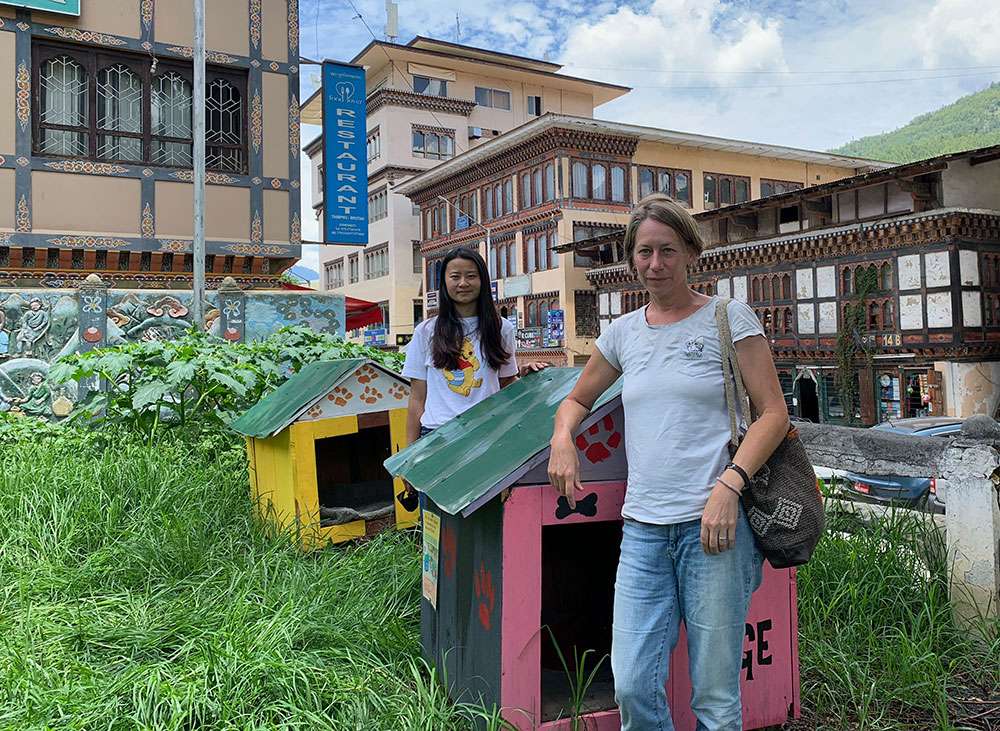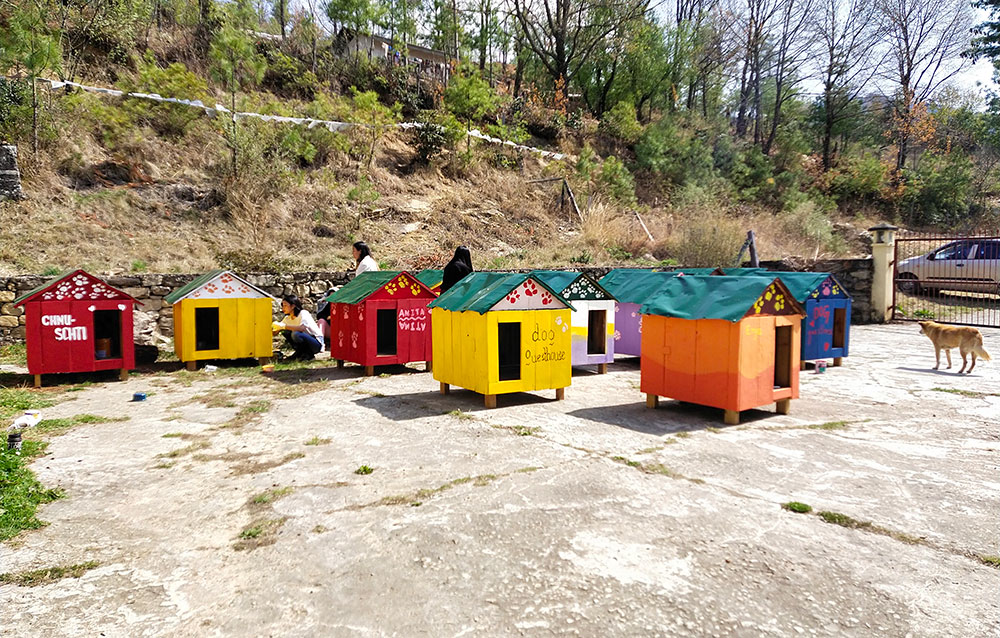One novel idea to address the growing stray dog problem
Yangyel Lhaden
One spring day they met. Love for dogs brought them together. They wanted to do something sensible to address the problem of growing stray dog population in Thimphu. And a plan was born.
Yangchen Lhamo was in her yoga studio when Nadine Koch walked in. Casual conversation led to a dream they shared passionately. They would build doghouses.
Nadine Koch is from Switzerland and runs a travel agency. Yanchen Lhamo after losing a job in tourism sector became a yoga instructor. Nadine looked for donations for her new project from her friends and relatives in Switzerland. Having lost their job due to the pandemic, both Nadine and Yangchen had to do something to keep themselves engaged productively.

Yangchen Lhamo and Nadine Koch
Cute and sturdy, the doghouses are colorfully painted, some with little paw prints. One has this written: “Donated by Mockli. Thank you woof woof”.
Yangchen and Nadine engage volunteers from all walks of life to paint the doghouses. They can be creative. “The only thing a painter has to remember is to write the donor’s name.”
There are 49 doghouses in all; nineteen were made on the first go. Yangchen and Nadine pay Nu 4,000 to get one doghouse made which are then distributed to different areas of the city. Some they donated to a dog organisation and volunteers who feed stray dogs—Zeus.
Yangchen’s younger brother, Sangay Choeda, is one of the carpenters. Yangchen calls him an accidental carpenter.
Sangay made his first-ever doghouse when his sister refused to give him a doghouse.
Sangay used to work in tourism sector which is dormant today. “Staying at home made me sick,” he said. Today, he does not mind the sun, getting dirty, and collecting scraps to build houses for dogs.
He said building something out of waste gave him happiness and satisfaction.
Nadine says it is a win-win situation for everybody.
It is, however, not always rainbows and sunshine for the women. They face challenges of transporting doghouse and getting donors. Sometimes they have to pay for transportation but they don’t mind. Nadine’s husband helps arrange transportation sometimes.
Nadine said that she expects more contributors to come forward when tourism opens.
Their other worry is the maintenance of doghouses. They have placed laminated posters on each doghouse with their numbers for people to call if anything happens to the doghouse.
The main idea behind this project is to control the stray dog population significantly.
How do they plan to do it?
By creating a friendly environment.
Nadine said dogs should be treated with love and affection. “Dogs should not only be treated as a problem.”
Yangchen feels the society has failed to control the stray dog population and it was time for people to rethink and create the right environment for people and dogs. “We are part of the problem.”
Sterilising dogs, Yangchen said, traumatised them. Many become aggressive. She said that there were many initiatives such as feeding and treating dogs to create a friendly environment which would make sterilising easier. “Dog house is an important value addition.”
Both Yangchen and Nadine maintain that the project won’t lead to a rise in dog population because they are also strongly engaged in sterilisation of dogs.
It is August 5, Thursday. Yangchen and Nadine are done with their yoga class and head out to place four doghouses, two in Vast Bhutan.
Nadine says to Yangchen: “Maybe we should place two in Pangrizampa or Tango.”
“Sure,” Yangchen agrees.
Edited by Jigme Wangchuk


